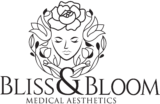PRP | Platelet Rich Plasma
Platelet-Rich Plasma (PRP) Therapy
Platelet-Rich Plasma (PRP) Therapy is a cutting-edge, regenerative medicine treatment that harnesses the healing power of your own blood to stimulate skin rejuvenation and hair growth.
How It Works
PRP therapy involves drawing a small amount of your blood, which is then spun in a our FDA-Approved ProGen Eclipse centrifuge to separate the plasma and platelets from the other blood components. The concentrated platelet-rich plasma, which is rich in growth factors, is then re-injected into the targeted areas of your skin or scalp.
Benefits
- Stimulates collagen production for skin rejuvenation
- Enhances the body’s natural healing process
- Promotes hair growth and reduces hair thinning
- Can be combined with other treatments for enhanced results
What to Expect
During the procedure, a small amount of blood is drawn from your arm. The blood is then processed to extract the PRP. The PRP is then injected into the targeted areas. The procedure is relatively quick and may involve some minor discomfort.
Post-treatment, you may experience some swelling, redness, or bruising, which should resolve within a few days. Over the course of several weeks to months, you should notice improvements in skin texture, tone, and elasticity, or increased hair growth.
Treatment Plan
The number of treatments required varies based on individual needs and desired results. However, most patients receive a series of 3-6 treatments, spaced about a month apart.
Safety and Side Effects
PRP therapy is generally safe and well-tolerated, with few side effects. Because PRP is derived from your own blood, there is no risk of allergic reaction. Side effects are typically minor and temporary, including redness, swelling, or bruising at the injection site.
But wait! We have some news for you!
Combining microneedling with PRP therapy can enhance the benefits of both treatments, leading to more significant improvements in skin health and appearance. Here are some of the benefits of this combination:
- Enhanced Collagen Production: Microneedling alone can stimulate collagen production, but when combined with PRP, the growth factors in the plasma can further boost the production of collagen. This can lead to improved skin texture and firmness, and a reduction in the appearance of wrinkles and fine lines.
- Improved Efficacy: The micro-channels created by microneedling allow for deeper penetration of PRP into the skin. This can make the PRP therapy more effective as it can reach the deeper layers of the skin.
- Faster Healing: PRP is rich in growth factors that can promote healing. When used in conjunction with microneedling, it can help speed up the healing process, reducing the downtime after treatment.
- Improved Skin Tone and Texture: The combination of microneedling and PRP can help to improve the overall tone and texture of the skin, reducing the appearance of scars, hyperpigmentation, and other skin irregularities.
- Enhanced Treatment for Hair Loss: When used on the scalp, the combination of microneedling and PRP can be an effective treatment for certain types of hair loss. The microneedling stimulates the hair follicles, and the PRP can promote new hair growth.
- Natural Treatment: Since PRP uses your own blood, it’s a natural treatment option that reduces the risk of allergic reactions or side effects.
WORKING DAYS: 10 am – 4 pm
WEEKEND: Contact Me
Face | PRP
- 3 Sessions = $1,499
Face | PRP + Microneedling
- 3 Sessions = $2,099
Face + Neck | PRP
- 3 Sessions = $1,699
Face + Neck | PRP + Microneedling
- 3 Sessions = $2,299
Hair + Scalp | PRP
- 3 Sessions = $1,999
Hair + Scalp | PRP + Microneedling
- 3 Sessions = $2,399
Hair + Scalp | Intradermal Peptides
- 3 Sessions = $1,499
Hair + Scalp | Intradermal Peptides + Microneedling
- 3 Sessions = $2,249

